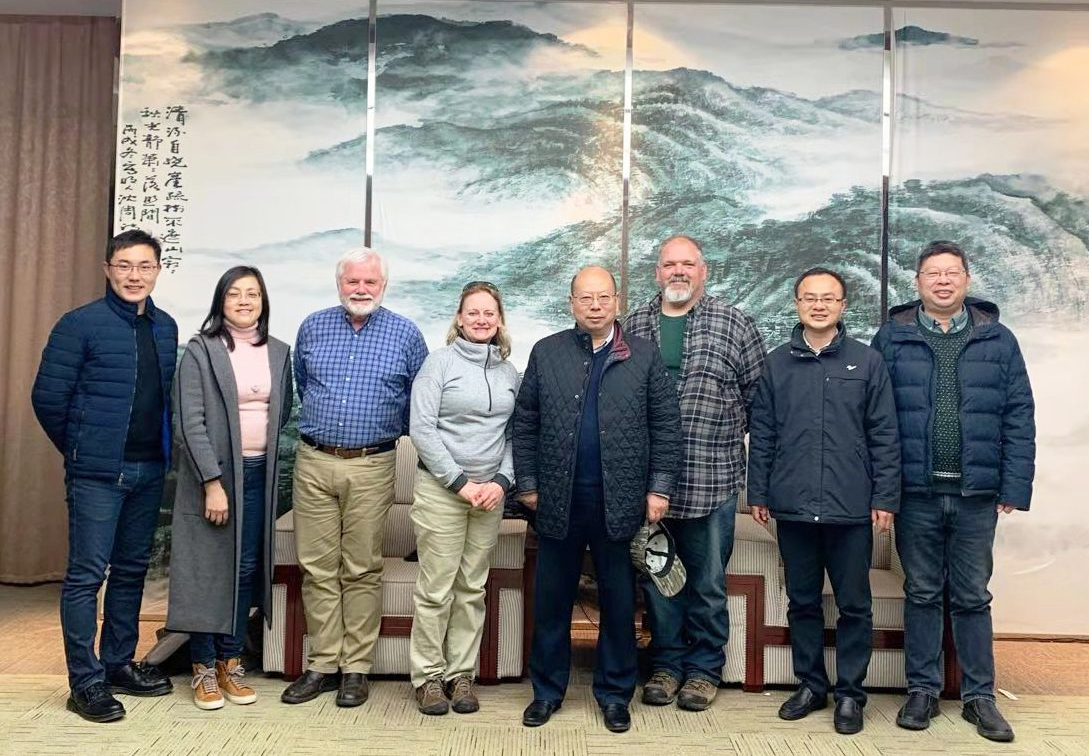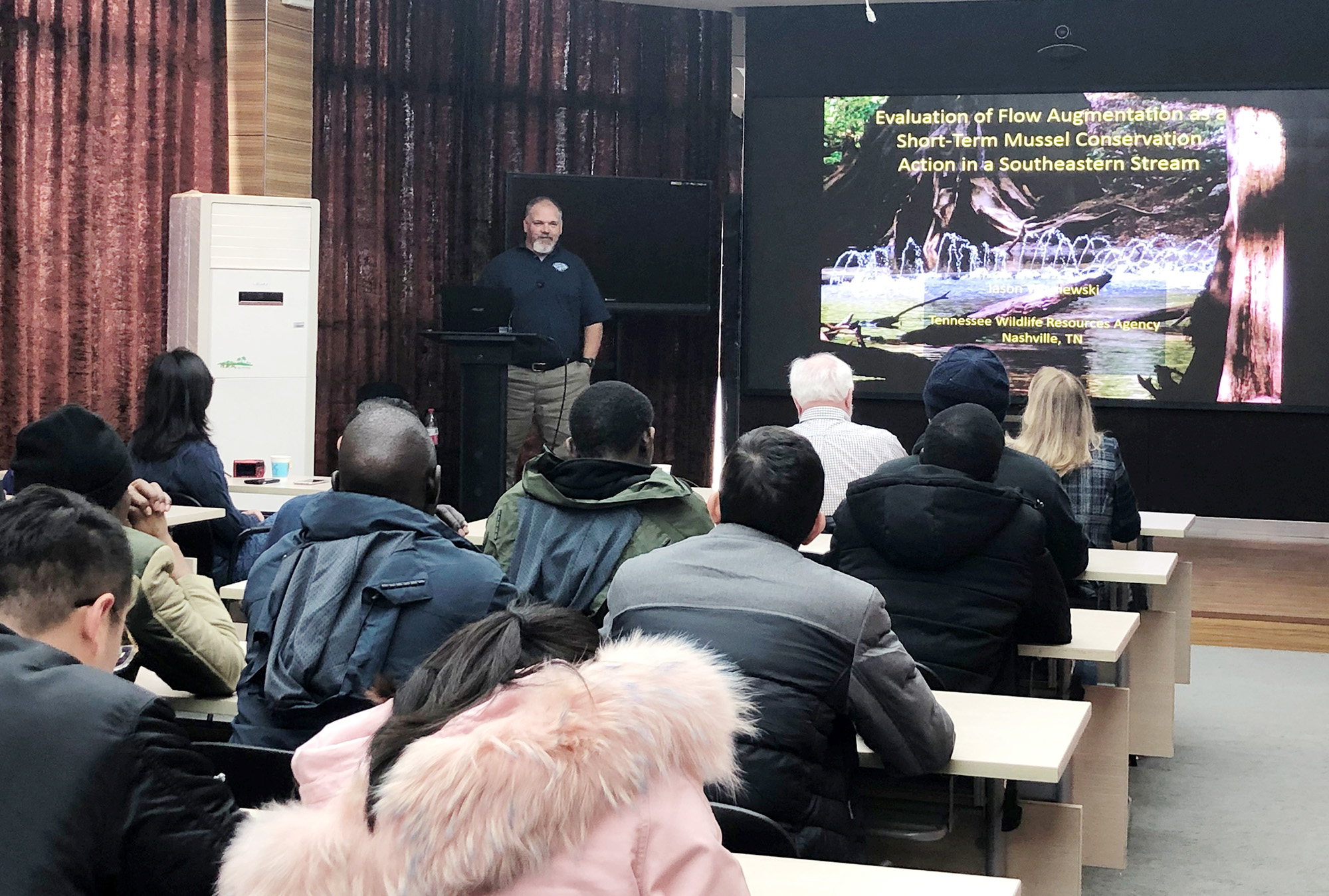From December 6th to 17th, Mr. Wliliam Charles Reeves, CEO of the Biodiversity Department of the Tennessee Wildlife Resources Bureau, Madam Andrea Lynn Upchurch, Assistant to the Chief Executive Officer, Dr. Hua Dan from Cambrian Aquatic Conservation Research Center and Mr. Jason Michael Wisniewski visited and exchanged with the Freshwater Fisheries Research Center, under the auspices of the Foreign Experts Bureau of the Ministry of Science and Technology's on the introduction of high-end experts in 2019. The exchanges focus on cooperative research on large-scale breeding of purple black mussel and aquaculture technology of purple black pearls. Prof. Xu Pao, Director of the Freshwater Fisheries Research Center, warmly welcomed the expert panel from the Tennessee Wildlife Resources Bureau.

During the discussion, Prof. Xu Pao reviewed the important international cooperation achieved by the two sides in recent years, and expressed his gratitude to the Tennessee Wildlife Resources Bureau for their support in the introduction and breeding of high-quality aquatic germplasm resources, and fully affirmed the two sides' efforts in purple and black mussels. Breakthroughs have been made in the introduction and breeding of brooders and the large-scale aquaculture of purple and black-winged mussels. It is expected that the two sides will continue to cooperate in depth to establish a successful model of Sino-US fishery science and technology cooperation and achieve win-win cooperation. William Charles Reeves (CEO) stated that he will, as always, support the research of the FFRC on the protection, introduction and development of fishery germplasm resources, and accelerate the output and sharing of the results of cooperation.

During the cooperative research period, Chinese and American experts set up a temporary international cooperative research working group, who visited the Jiangyin and Yangzhongbases of FFRC, to conduct field investigations on the breeding of purple black mussel and their brooders, and confirm the research progress of purple black pearl culture. In this regard, special discussions and exchanges were conducted on the key technologies of artificial breeding and hatching of parasitic fish, Compatibility of artificial oxytocin, artificial incubation facility of fertilized eggs, domestication of juvenile fish feed, which further optimize for large-scale breeding of freshwater drum Sciaenidaein 2020. Based on artificial breeding to obtain freshwater drum Sciaenidaejuveniles, a large-scale parasitic breeding technology process for purple black-winged mussel was established, which greatly simplified the technique of parasitic breeding by relying on alternative brooders, which significantly reduced the artificial breeding cost and improved the nursery efficiency. The project research confirmed the technical feasibility of allogeneic transplantation of purple black mussel for the first time, and established the key technology of seedless purple black pearls and large-sized purple black pearl inserts, thus successfully completed the tasks and met the goals issued by the Bureau of Foreign Experts Affairs of the Ministry of Science and Technology this year, providing technical support for the development of the industrialization of purple and black pearl breeding in China.

In addition, the Chinese and American partners formulated detailed work plans on further in-depth research on the artificial breeding of freshwater drum fish and the ecological farming of large-scale purple and black pearls in 2020, and formulated a plan for mutual visits and exchanges between Chinese and American researchers. Ms. Andrea and Mr. Jason were also invited to give academic reports entitled "Biodiversity of Tennessee" and "Evaluation of Flow Argumentation as a Short-Term Mussel Conservation Action in Southeastern Stream", and exchangedwith scientific and technical personnel, foreign students and graduate students of the Freshwater Fisheries Research Center.